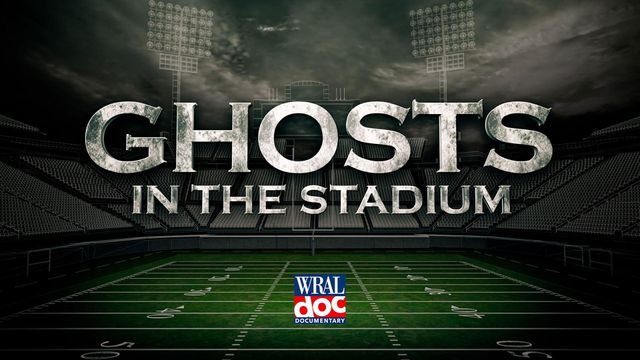Panthers stadium built overtop lost Black community, site of horrific lynching
Tens of thousands of people visit Bank of America stadium to watch the Carolina Panthers play football each year – never realizing they are walking on top of lost remnants of a once-thriving Black neighborhood established in the aftermath of the Civil War.
The stadium itself is built directly atop a relic of segregated healthcare: Good Samaritan Hospital, the first private hospital built in North Carolina to serve Black patients. Built in 1891, this historic hospital was one of the oldest of its kind in the United States.

It was also the site of one of the "most horrific racial incidents in Charlotte's history," according to Dan Aldridge, professor of History and Africana Studies at Davidson College.
A mob of 30 to 35 armed, white men invaded the hospital, dragging a man out of the hospital and into the streets – and shooting him dead in front of the building.
Urban renewal: Panthers stadium buries lost Black neighborhood
The concept of "urban renewal" destroyed Black neighborhoods, communities, businesses and homes all across North Carolina, especially between 1949 and 1974.

Durham, for example, once had a prominent Black Wall Street, where Black businesses flourished; however, the historic community was almost completely destroyed by construction of the Durham Freeway.
Likewise, Raleigh once had 13 historic Freedmen's Villages, built entirely by men and women freed from slavery in the aftermath of emancipation. Today, only two are remaining, and Oberlin Village, the largest one, was cut in half by the construction of Wade Avenue.
Similarly, Charlotte's Brooklyn community was built by men and women freed from slavery in the late 1800s. Like many Black communities around the state, it was forced into an awful geographical location – on low-lying land where flooding, sewage and sanitation issues made life hazardous.
According to history in the Charlotte Library, the Brooklyn area was first identified on maps as 'Logtown' in the late 1800s – a name that matches closely with titles given to similar freedmen villages in the Triangle area, which were often called slang names like 'Slabtown' or 'Save Rent' due to their inexpensive homes.

In the 1900s, the area became known as Brooklyn, "a name that would become synonymous with the Black community until urban renewal."
"It's a tragedy that so many stadiums were built on sites that were once Black communities," said Aldridge. "They're poor neighborhoods. They're struggling neighborhoods. I won't romanticize them by claiming they're all like Black Wall Street, but they were people's homes and people's communities, and they were taken from them."

Many historically significant Black sites were lost in urban renewal; likewise, many Black communities were forced to build in geographically unfit areas, making growing wealth and property more difficult – and more easily lost over time.
At its peak, Brooklyn was home to:
- Charlotte's first Black public school
- Charlotte's only Black high school
- The city's first free library for Black patrons
- The first companies to offer white collar jobs to Black workers
- The first private hospital for Black citizens in Charlotte
"This is an important part of what the past was actually like," said Aldridge. "You know, what sort of led to the society we have now – in good ways and bad."

Panthers football field sits on the site of a historic lynching
Today, football players run up and down the Bank of America field for the amusement of thousands of cheering fans. However, in 1913, over a century ago, that same land had a very different story.
"The hospital is the most notable thing on the site of the Bank of America Stadium," said Aldridge. "So at the one hand, it's a symbol of Black achievement and pride. We have a hospital! But it's also emblematic of racial health disparities. It's a symbol of both shame and pride."

Joe McNeely, a 22-year-old Black man who was being treated inside the hospital, was dragged out into the street by an angry mob of around 35 armed white men and killed.
"He was a laborer who lived right here in Charlotte," said Krista Terrell, who is on the steering committee for the Charlotte-Mecklenburg Remembrance Project.
McNeely got into an altercation with a white police officer. Gunshots were fired, and McNeely was accused of shooting and wounding a police officer in the line of duty.
McNeely, who was also shot and injured during the altercation, was arrested and held inside Good Samaritan Hospital.

"He was not a patient there. He was chained to his bed and was guarded by two police officers," said Terrell.
A mob of angry men stormed the hospital and shot McNeely to death right in front of the building.
"All of this takes place on what is now the site of the Bank of American Stadium," said Aldridge.
A group of jurors deliberated for three days, but in the end no one was ever held accountable for McNeely's lynching.
Both Terrell and Aldridge believe the history of Brooklyn, the hospital and McNeely should not be forgotten.
"I don't think you should – you can't tear down the stadium because of it – but you should acknowledge what happened on the site and the presence of Good Samaritan Hospital and this whole Black community on the site," said Aldridge.
In recent years, Terrell has worked with volunteers to memorialize McNeely and the site of the lynching.
"We went onto the field of Bank of America Stadium and tried to get as close to the proximity of where Mr. Joe McNeely was lynched," she said. "We had individuals and young men that dug into the soil and placed that soil into the empty jar. It was very solemn, very quiet, very respectful."
A historical marker has also been created and will be installed at Bank of America Stadium alongside the Good Samaritan Hospital marker.
It can be haunting to envision all of the once-thriving Black communities that have been buried and nearly erased by history – but Aldridge says it isn't shocking to learn how much Black history has been erased.
"Exploitation of the poor and powerless is something that doesn't shock you – if you read history," he said.
History hidden by football stadiums across the state
The Panthers stadium is far from the only football stadium hiding lost Black history. NC State's Carter-Finley is also built atop a lost Black community, known as Lincolnville, and for decades crowds walked right past a hidden Black cemetery without even realizing it. Clemson's stadium is also built over a cemetery where enslaved men and women were buried. The football stadium at UNC is linked to the brutal history of the Wilmington Massacre.
'Ghosts in the Stadium' is a new WRAL Doc exploring the hidden history beneath each of these iconic football stadiums.
Podcast: Chris Lea shares his personal insights on Ghosts in the Stadium
Listen to Chris Lea explain how he became fascinated with the history hidden by football stadiums across NC and SC.















